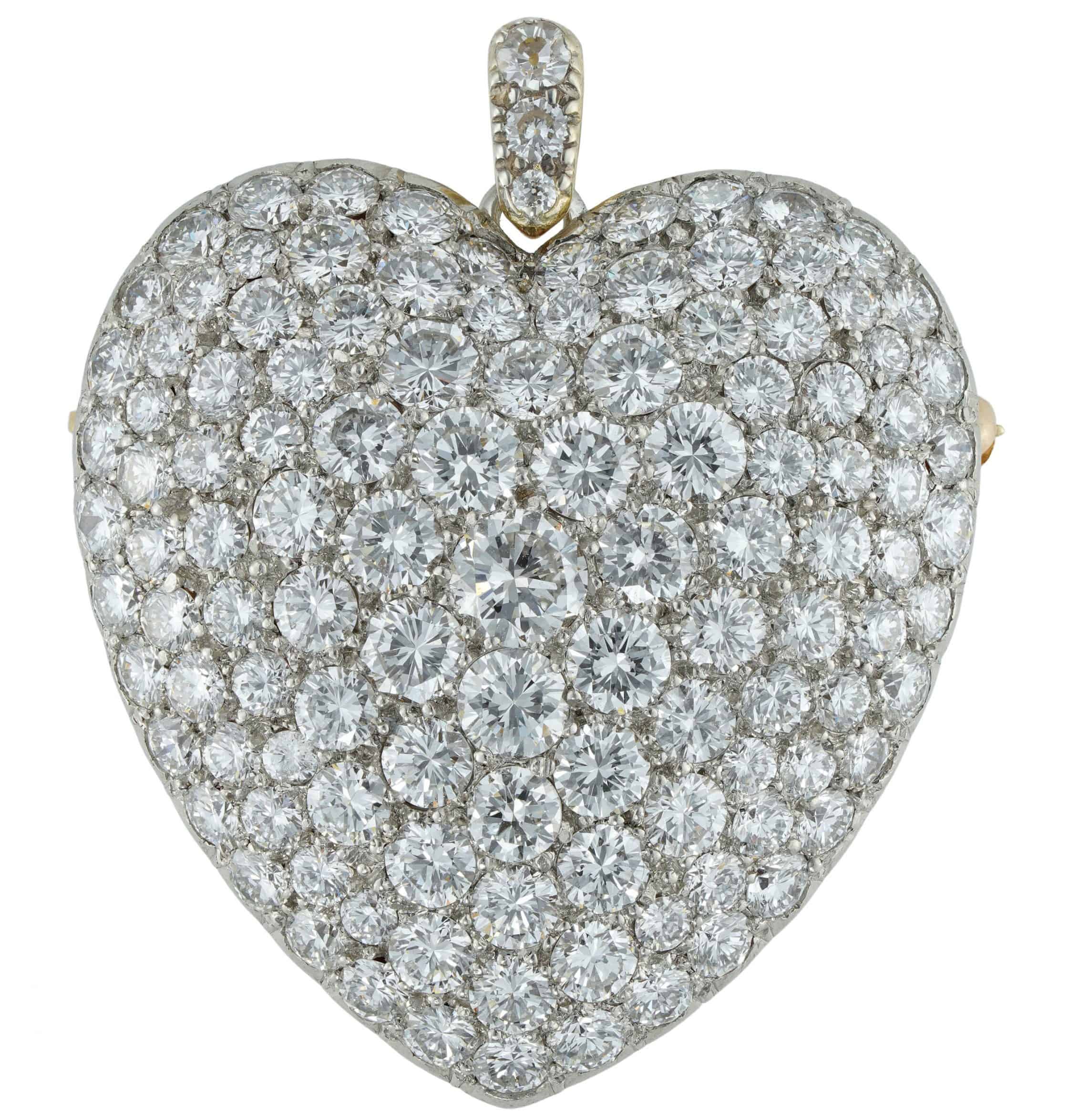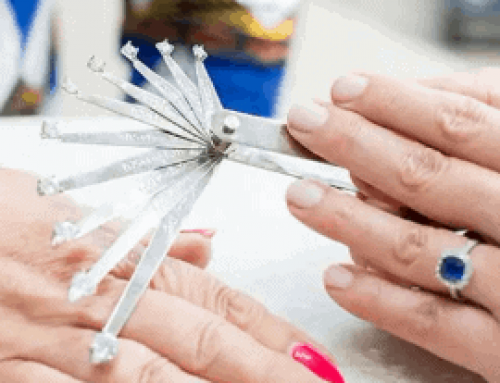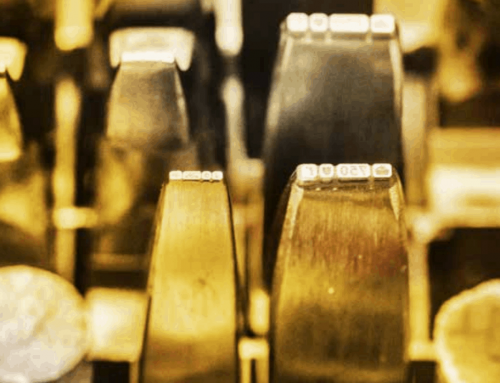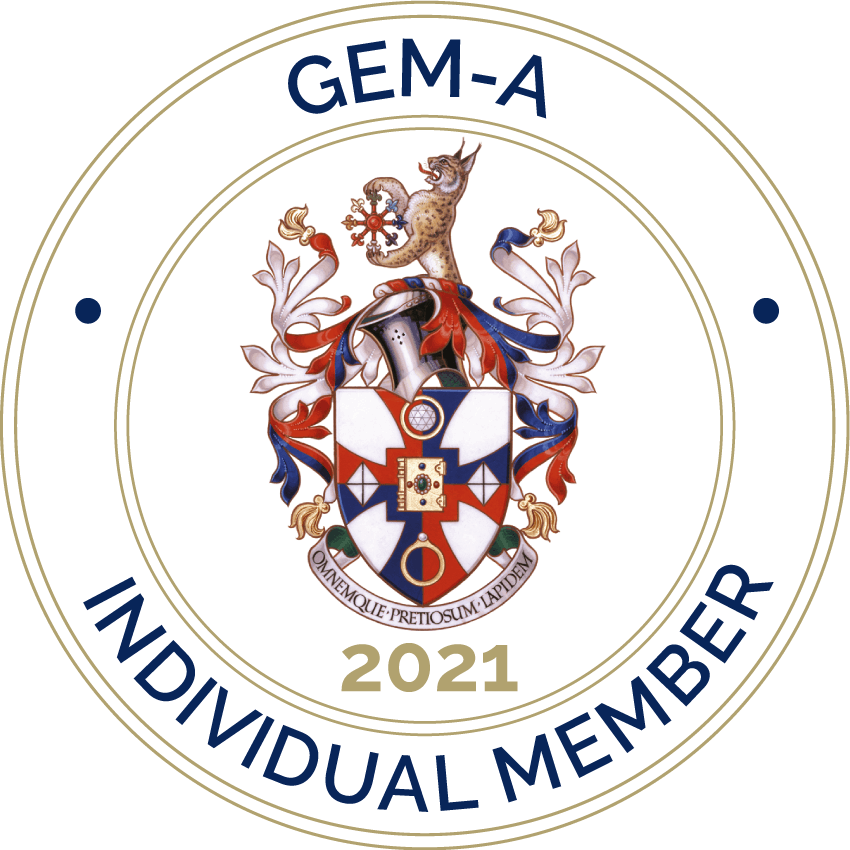Diamonds


Diamonds a Brief History and Introduction
Diamonds have a long history as beautiful objects of desire, wonder and awe. First found in alluvial (river) deposits in India from the 4th Century BC. Gradually finding themselves in western Europe along trade routes via Venice. However, the first known cutting wasn’t until the 15th and 16th Century when they became the fashionable accessory for the elite classes. Indeed we believe the first engagement ring was for Mary of Burgundy in 1477 from Archduke Maximillian of Austria. The modern diamond market really begins on the African continent though, with the discovery in 1869 of diamonds in Kimberly, South Africa, underground in their original pipe mine where they were first formed. Today central and southern Africa, Russia, Botswana, the Democratic Republic of Congo, Australia and Canada are the largest producers.
Symbolism
Throughout history diamonds have been worn as a symbol of strength, courage and invincibility. Those born in April are lucky enough to call this scintillating gem, a symbol of clarity and strength, their birthstone. An emblem of purity and perfection. Once only the preserve of royalty and powerful families, today they are the ultimate symbol of love. Let’s explore where this association comes from and what makes a diamond so important.
Definition
By definition a gemstone is:-
- Rare
- Durable
- Beautiful
Therefore a diamond that is the utmost embodiment of this properties is by association a unique and perfect symbol of love.
Rarity
Diamonds form in conditions of high temperature and high pressure (abbreviated to HTHP), hundreds of miles below the surface of the earth. Originally formed in diamond pipes that first occurred 2.5 billion years ago, these diamonds are notoriously difficult to locate and extract, for example 250 tonnes of ore must be processed for just one carat of gem quality diamond.
Durability
Diamond is the hardest naturally occurring substance known to exist. Its name even derives from the Greek ‘Adamas’ meaning unconquerable, it is also chemically resistant. Diamond is composed of pure carbon, but it due to strength of the bonding between the atoms (which are very strong and regular), this produces a structure that is enormously resistance to abrasion. (tetrahedral covalent bonding to be precise!) Graphite by comparison although composed of the same atoms, but combined differently forming a much lower hardness. Hardness by definition is the ‘ability of a material to resist abrasion when a pointed fragment of another substance is drawn across it’. This incredible hardness is also what allows a diamond to take a high degree of polish, the atoms are so tightly packed together it creates an ‘adamantine’ surface – stunning finished polish.
Mohs Scale
In 1822 the German mineralogist Friedrich Mohs produced a practical scheme for mineral hardness assessment. Bringing together ten readily available materials in their pure form listed in order of ability to withstand scratching. Resulting in what we know today as Moh’s scale of hardness, talc is the softest at 1 and diamond at 10 is the hardest. Each one above will scratch the one below. It is important to note however, that this scale gives only an order of relative harness and is a non-linear scale, so the difference between 9 and 10 is much greater than 1 and 2. Diamond is exponentially harder than any other mineral.
Differential Hardness
Hardness in diamonds also differs with direction, which is due to the regular arrangement of planes and directions of atomic bonding in the crystal structures detailed above. Just like effect of grain in a piece of wood, it is easy to scratch the wood along its grain, rather than across. Differential hardness exists in diamonds and is particularly noticeable, if we think about it, the only material that can cut diamond is diamond. The effect of directional hardness is such that a diamond cannot abrade another diamond at all long one particular set of directions and will abrade only with great difficulty along certain other directions. Therefore diamond grit or powder used to cut and polish diamonds is a mass of particles presenting variously oriented directions of maximum hardness. This illustrates another example of the ultimate skill of a diamond cutter.
Beauty
Apart from the ‘4C’s’ a man made system to quantify diamond properties namely Colour, Cut, Carat and Clarity, the secret to a diamonds beauty is:-
- Fire
- Brilliance
- Luster
- Transparency
These are best illustrated on the parts of a round brilliant cut diamond, which each perform a different function.
- Crown (the area above the girdle)
- Girdle (the widest part of the diamond)
- Pavilion (the area below the girdle)
‘Fire’
Is created by the crown facets, acting like a prism splitting of the light into the spectral colours of the rainbow.
Brilliance
Is the return of the ‘white’ light to the surface of a polished diamond, created by the internal refraction of the pavilion facets, acting like a cone of mirrors.
Lustre
This is a surface reflection effect due to the incredible hardness that creates ‘mirror’ like or ‘adamantine’ surfaces. 17% of the light that hits a diamond surface is reflected back.
Transparency
Diamonds are the most transparent of all crystalline materials, optically we see through the stone to truly appreciate their beauty. I also say they are a bit of a ‘show off’!
The four C’s
The concept and term of the ‘4c’s’ was coined by the Gemmological Institute of America (GIA) founder Robert M. Shipley. Passionate about greater knowledge, standard and education the ‘4C’s was a mnemonic device to help students remember four of the factors that characterise a faceted diamond:-
- Carat
- Clarity
- Colour
- Cut
Carat
The unit measurement of gemstone weight (not the size), its name is derived from the carob tree, as the seeds were a constant weight and therefore a vital device to facilitate constant measuring before portable equipment.
One carat abbreviated to ‘ct’ is equal to a 1/5th of a gram. 1 carat is known as 100 points, half a carat 50 points and so on.
‘Total carat weight’ (t.c.w.) is a phrase used to describe the total mass of diamonds or other gemstone in a piece of jewellery, when more than one gemstone is used.
Like all of the ‘4C’s’ carat has an impact on the price. All things being equal the heavier the diamond the higher the price, but on a nonlinear scale. That is because a diamond that is twice the weight, is more than twice as rare, therefore more than twice the cost.
Clarity
Clarity is defined as relative freedom from inclusions and blemishes. An Inclusion is a characteristic inside the stone, blemishes are surfaces characteristics. It is rarer to find a stone without natural inclusions or growth marks which are graded to 10x magnification.
Clarity Grading
Diamonds are graded with a loupe or microscope to the industry standard of 10 times magnification. Therefore a flawless diamond may have inclusions at a greater magnification, but it is what seen at 10 times that is stated. The following five factors will dictate the clarity grade:-
- Size
- Number
- Position
- Nature
- Relief (or colour)
Clarity Grades
- Flawless ‘FL’
Show noinclusions or blemishes - Internally Flawless ‘IF’
Show no inclusions and only insignificant blemishes - Very Very Small Inclusions ‘VVS1/2’
Contain minute inclusions that are difficult to see and locate - Very Small Inclusions ‘VS1/2’
Contain minorinclusions that are somewhat difficult to see - Slightly Included ‘SI1/2’
Contain noticeable inclusions that are easy to see - Imperfect ‘I1/2/3’
Containobvious inclusions that can easily be seen with the naked eye
The difference in numbers denotes the quality within each grade, 1 being better than 2 or 3. That is to say the inclusions are more likely to be on the outside of the stone (where it is harder to see) and clearer in nature or type. Please note some descriptions have been denoted as ‘SI3’, this is not an accepted grade and is merely a method to promote and sell an imperfect ‘I’ stone.
A small difference in any aspect of a diamonds grading can have a huge impact on the price, therefore exists the incentive to improve or alter the appearance of the stone. All unnatural enhancements such as laser drilling and fracture filling are not accepted.
Colour
There are two scales of grading for a diamond’s colour.
- The degree of ‘whiteness’
- The fancy colour scale
The ’Whiteness’ Scale
The ‘whiteness’ scale plots the relative position of a diamond’s dody colour on a ‘colourless’ to (normally) yellow scale. That is because the carbon atoms most readily react with nitrogen causing the yellowish (or brownish) tones. As we all see colour differently, diamonds are graded in a laboratory against at set of GIA (Gemmological Institute of America) master stones graded D-Z. This scale is believed to start at D as no diamond is truly ‘white’ and some also suggest its ‘D’ for diamond. Diamonds are placed table down and under northern daylight equivalent (no sunlight that is – south of the equator stones will be placed in southern daylight equivalent). The further down the alphabet the more saturation of ‘tone’ is seen. Between each letter slightly more colour is observed. D/E/F however, are still pure ‘white’ is it just the degree of transparency that differs. G/H/I are classed at slightly tinted white. G for example will face up white (due to the brilliance) and only face down as slightly tinted. Most human eyes can begin to detect the colour to the naked eye around ‘H/I.’
Fancy Colours
For fancy colours the grading is reversed, graded beyond Z at the end of the alphabet it is the hue, saturation and tone that is assessed. Usually in order of rarity yellow, brown, sometimes green, blue, orange and pink, rarely red and purple. Aapproximately only 1 crystal in 10,000 is a fancy colour, therefore they are incredibly rare. The value of fancy colours value determined by fashion too.
The causes of colour vary. As detailed the yellowish, brownish tones are caused by carbon’s reaction with nitrogen, blue is similarly caused by a reaction with boron, green is exposure to radiation (It should be noted this can be an entirely natural phenomenon from the earths’ crust when the diamond has grown near radioactive rocks). Pink is when there is a default or change in the crystal lattice system and lower selective absorption of light. Black is mainly from multiple inclusions.
Fancy Colour Grading
Fancy diamond colour is graded along three different axes. They are hue (the actual colour), tone (the relative lightness or darkness of the colour), and saturation (how strong or weak the colour is).
Hue is most often described as a combination of two or more colours, it can be up to three. When the first colour is listed in an adjective form and the second colour in a noun form (i.e., Orangy Yellow), the first colour is the modifying colour and the second colour is the primary. If they are evenly balanced it will be stated as ‘Orange Yellow’. Pure colour stones are very rare and therefore more valuable.
The saturation of these hues is then described with one of nine descriptors: Faint, Very Light, Light, Fancy Light, Fancy, Fancy Dark, Fancy Intense, Fancy Deep, Fancy Vivid.
You may have heard of “Champagne”, “Cognac” and “Coffee” diamonds, these actually refer to different types of brown diamonds that have been positioned with more appealing or romantic labels. These terms are not technically used in diamond grading (due to the lack of definitive definition descriptions), I but I believe, has opened up the market to the beauty of all diamonds. To clarify ‘champagne’ diamonds are light brow, cognac is usually used to describe a diamond that is orangish-brown because cognac is a deep golden-orange colour and ‘coffee’ is usually used to describe a diamond that is a deep brown or vivid brown colour.
Cut
Cut is the most important of the 4C’s as the cut has the greatest opportunity to
unlock the ultimate potential of the diamond. It is also the only factor influenced by man.
The History of Diamond cut – watch the jewel-matching video on the evolution of diamond cutting Link to jewel matching reel
Difficulty of Cut
Diamonds are notoriously difficult to cut, let alone cut accurately, diamond cut is graded on the following criteria:-
- Proportion – the angles and the relationship between the different parts of a diamond
- Symmetry – the symmetrical appearance of the stone
- Finish – the exactness of the shape and arrangement of the facets and the quality of polish
At this stage it is imperative to point out the 4C’s is man-made system imposed on a natural gemstone. The following is therefore based on the ‘modern’ round brilliant cut
Characteristics of a good cut
- Brilliance– White light returned to the eye
- Dispersion – Fire– White light broken up into spectral colours
- Scintillation- Sparkle
The anatomy of a diamond
Diamond measurement is based on strict rules, all based around the girdle measured at 100%
Poor Cutting
To make a diamond look stone look bigger and therefore wider, may result in a shallow cut pavilion. This will however, lose light at the base of a pavilion and is known as ‘fish eye’.
Conversely a deep cut pavilion will lose light outside of a stone, although it may conserve weight and get the diamond over that magic desired carat weight, in extreme cases the effect is called a ‘nail head’.
Both of these examples illustrate the importance of an independent certificate to assess the cut grade.
Girdle
A girdle is the widest part of a diamond, the perimeter of a faceted gemstone, that divides the crown from the pavilion. It also provides protection to the edge of the diamond, it observed at the 16 points of intersection of the main and girdle facets and intervening narrow sections. Ideally this hould be very thin and just visible to the naked eye, but not too thin to render the edges vulnerable, conversely a thick girdle will lose brilliance. When looking at the mathematical and precise proportions of a diamond, the girdle is always the benchmark at 100%.
Fluorescence
Fluorescence is a natural phenomenon caused by ground radiation. By definition it is the ‘emission of visible light whilst being illuminated by radiation of shorter wavelengths and higher energy known as ultraviolet. This is a variable phenomenon exhibited in around 25-35% of diamonds. It can therefore be diagnostic as some simulants will have a constant reaction. The colour emitted can be different than normal daylight colour. A diamond’s fluorescence by its intensity (None, Faint, Medium, Strong and Very Strong) when compared to master stones used in the lab. If the fluorescence is Medium, Strong, or Very Strong, the colour of the fluorescence will be noted.
It has a negligible effect on value and ‘normal’ appearance, but most are comfortable with up to a medium reaction for others the strong impact of high fluorescence can make the stone appear ‘whiter’ and this is therefore desirable
Phosphorescence
A radiation is emitted by a material which is irradiated by a higher energy source, after the source has been removed the emitted radiation continues, gradually diminishing.
Certificates
A certificate is an independent laboratory grading report of a gemstone, assessing and confirming the properties and characteristics of each stone.
What to look out for
- Check the date, if older check for subsequent damaged.
- Check the reputation and status of the lab, they should be registered with CIBJO (The World Jewellery Confederation). The GIA (the General Institute of America), is the most well-known but others are as credible.
- Remember you are not wearing certificate but a natural diamond, look with your eyes and heart as well as the information detailed.
- Cut grades criteria are designed for modern cut diamonds, beauty is in the eye of the beholder.
- Beauty performance certificates are different to technical grading you may also wish to invest in.
A couple of reality checks or points to remember.
- Diamonds attract grease and repel water. This is a great quality when we want to separate diamonds from the ore, but not great when wearing them! Your local jeweller can offer professional cleaning with a UV that and sell related products. However, should you want to clean your diamond jewellery at home, place them in a separate bowl of luke warm water with a drop of fairy liquid, use a soft toothbrush and clean the stones all over – do not use gin – it’s an old wives tale and waste of a good drink!
- Diamonds can chip – although the hardness material known to man they are not the toughest, a diamond can chip or even shatter if struck by a sharp blow. Always ensure you have a full inventory of your jewellery and adequate insurance cover. Named items on your home insurance can be the most cost effective, if not the following two providers can help





